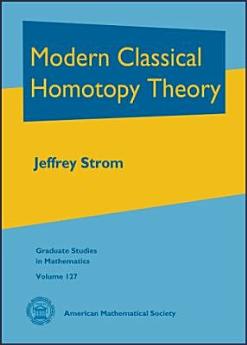Modern Classical Homotopy Theory
Jeffrey Strom
Oct 2011 · American Mathematical Soc.
eBook
835
Pages
reportRatings and reviews aren’t verified Learn more
About this eBook
The core of classical homotopy theory is a body of ideas and theorems that emerged in the 1950s and was later largely codified in the notion of a model category. This core includes the notions of fibration and cofibration; CW complexes; long fiber and cofiber sequences; loop spaces and suspensions; and so on. Brown's representability theorems show that homology and cohomology are also contained in classical homotopy theory. This text develops classical homotopy theory from a modern point of view, meaning that the exposition is informed by the theory of model categories and that homotopy limits and colimits play central roles. The exposition is guided by the principle that it is generally preferable to prove topological results using topology (rather than algebra). The language and basic theory of homotopy limits and colimits make it possible to penetrate deep into the subject with just the rudiments of algebra. The text does reach advanced territory, including the Steenrod algebra, Bott periodicity, localization, the Exponent Theorem of Cohen, Moore, and Neisendorfer, and Miller's Theorem on the Sullivan Conjecture. Thus the reader is given the tools needed to understand and participate in research at (part of) the current frontier of homotopy theory. Proofs are not provided outright. Rather, they are presented in the form of directed problem sets. To the expert, these read as terse proofs; to novices they are challenges that draw them in and help them to thoroughly understand the arguments.
Rate this eBook
Tell us what you think.
Reading information
Smartphones and tablets
Install the Google Play Books app for Android and iPad/iPhone. It syncs automatically with your account and allows you to read online or offline wherever you are.
Laptops and computers
You can listen to audiobooks purchased on Google Play using your computer's web browser.
eReaders and other devices
To read on e-ink devices like Kobo eReaders, you'll need to download a file and transfer it to your device. Follow the detailed Help Centre instructions to transfer the files to supported eReaders.




